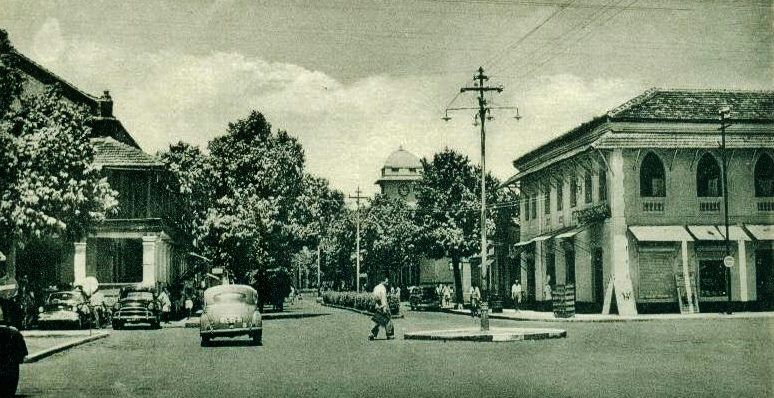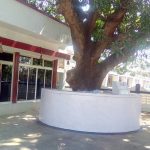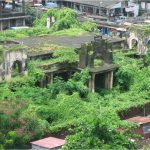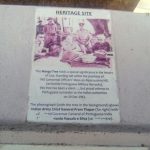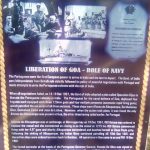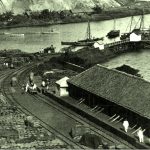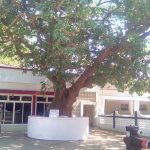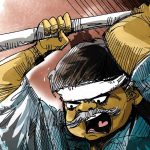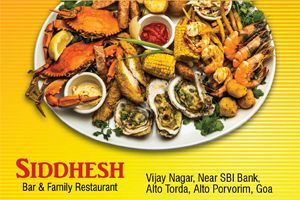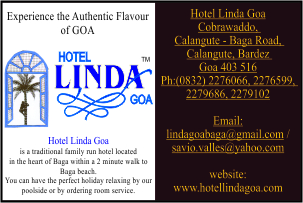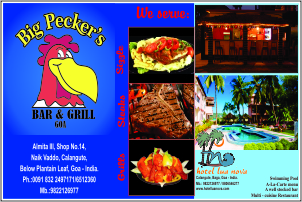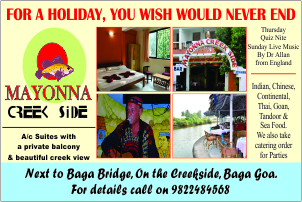SANGITA SHARMA
Vasco-da-Gama or simply Vasco, the port town of Goa is named after the illustrious explorer and navigator Vasco-da-Gama, the 1st Count of Vidigueira, who was also the first European to reach India by sea. He was largely responsible for discovering the maritime routes from Western Europe to the East in 1498. The Portuguese got hold of this area in the 16th century and the ‘Sada Fort’ was built in 1543. Within a span of a few years this area was converted into one of the most sought after ports of India. The fort was constructed to monitor the movement of ships into the Zuari river. Soon after its construction, the fort was abandoned and today one can see some remnants of the ramparts.
However, inspite of being abandoned, the area continued to be of political and economic interest to the Portuguese. In 1624, they built the formidable Mormugao Fort and had major plans for it. But later they abandoned it and the fortress served as a military base. The importance of its port grew with the coming of the railways. Mormugao was created in 1917 for administrative purposes from a part of Salcete and the new town Vasco-da-Gama was built. The port area continued to be called Mormugao and Vasco was built on one of the sites of the three villages that were originally part of this area. It was known to be a colourful city of officials, traders and migrant labourers and had its Portuguese academies and British club life for several decades.
The present day Vasco is a bit of a reflection of the port town that existed during the Portuguese rule. The remains of monuments, forts, heritage buildings and structures are a testimony of its past and echo the ethos of the Goan way of living. It is home to some of the wealthiest industrialist and business families of Goa – the Salgoankars, the Chowgules, the Bandekars, the Joshis, the Lotlikars and the Mainkars who have contributed to the city’s growth and economic opportunities. The fisher folk, hawkers, small-time traders, fruit and vegetable vendors create a bustling market and are the soul of the town.
As Vasco moves ahead with time, the need to turn back the pages of history is felt as its intriguing past has a rich tapestry of stories to be told. Vasco is repository of some of the historical gems of the Portuguese rule and Hindu culture – the Fort of Mormugao, the Church of St. Andrews, the Damodar Temple, the Clock Tower and others. While some of them stand tall in all their glory even today, there are some that have gathered the dust of time. Nevertheless once polished, these rare gems can be the pride of Vasco attracting tourists, history buffs and others. Besides, Vasco is also the recipient of some interesting historical anecdotes that needs to be relished. Unraveling and preserving the treasures of history are the essence of a truly civilised and progressive society.
To do so, it is essential to delve into the past and understand the dynamics of Portuguese rule in Goa. The present Vasco was like any other coastal village of Goa when the Portuguese arrived on the Western coast. In the initial years of their arrival, they had no major plans for Goa but later realised its potential for trade and the fulfillment of their policy against Islam. Goa had been under the jurisdiction of the Sultans of Bijapur. They followed a policy of extortion and religious oppression because of which the people of Goa were dissatisfied by their rule and hoped for some kind of political intervention to end the Muslim rule.
The Portuguese too were waiting for an opportunity to conquer Goa. They got this opportunity when Thimmaya informed them that the Sultan of Bijapur was unwell and that there were no lords but only guards of the local administration to protect Goa. The prospective heirs were in Bijapur, preoccupied by the uncertainty of the Sultan’s succession. The Portuguese entry into Goa was met with no resistance, as the people of Goa were only too glad to get rid of the rule of the Muslims.
This did not last for long and the Portuguese had to retreat as the furious Sultan sent an army to oust them. But the Portuguese returned with a reinforced force led by Albuquerque and defeated the Muslims, establishing their rule over Goa on 25 Nov 1510, changing the course of its history forever.
The Portuguese pursued a policy of expansion in the years to come. They enforced their political, economic and religious policy with ferocity in the early years but became tolerant and inclusive in the later years. Due to political changes in Portugal, Goa lost its vibrancy and steadily declined in the years before they left. The rest of India freed from the British rule forged ahead but Goa under the Portuguese rule seemed to have frozen in time with its distinct way of life. It had evolved its own culture and an essentially rural, easy paced and insular way of living. The exit of the Portuguese disoriented the people of Goa as they had aligned themselves to their rulers. At the same time, the Portuguese rule left Goa distinctly different from the rest of the country.
The Portuguese rule came to an end on 19 Dec 1961, 19:30 hrs. at Vasco-da-Gama, with the combined efforts of the Indian Army & Navy. The Instrument of Surrender was signed at the Alparqueiros Hill, under a mango tree, near the erstwhile Portuguese barracks. That their exit was formalised at Vasco-da-Gama gives the city its moment of eternal glory. And it is from this point that the threads of the past have to be picked up to recreate the magic of Vasco.
Vasco is the quintessential example of a town with huge potentials to be tapped and explored. This town’s future lies in its historical legacy and in its promising present. Both need to be harnessed for a brighter tomorrow. It has contributed to the economic wealth and trade over the years and still holds the key to Goa’s burgeoning financial growth. But it is sad to see that not so much has been done to project the historical significance of the city of Vasco.
The Mormugao Fort was built in 1624 under the aegis of King Dom Phillip of Portugal & Dom Francisco-da-Gama, the Viceroy of Portuguese India and the grandson of Vasco-da-Gama. Its significance at that point of time lay mainly in guarding the mouth of the harbour and to safeguard against the attacks by the Marathas. The then Viceroy was disturbed by the repeated forays of the Marathas and decided to construct a fortified town in this area. In 1683, fearing the Maratha King Sambhaji’s attack, the Viceroy shifted his capital from Old Goa to Mormugao’s formidable fortress. However, it was later felt that Mormugao was not central enough for the Portuguese empire and they shifted back to Old Goa. In a way it was a sensible move as the Marathas conquered the fort in the 17th century and it remained under them for some years before it was recaptured by the Portuguese.
The Mormugao fort spanned over 9 km in circumference. It contained towering bulwarks, 3 magazines (armament storage), 5 prisons, a Chapel, quarters for the guards, 53 guns and a Garrison with 4 officers. The Viceroy’s palace was later converted into Hotel Palacio and it is currently with Mormugao Port Trust. The fort’s bulwarks and bastions are intact and fortify the area even today.
St. Andrews Church or ‘Igreja dos Santo Andre’, built in 1570 by the Jesuit priests, is a prominent feature of the city and a heritage monument. The Neo-Gothic stark white facade gives the Church a stately and gracious charm. In the early years after its construction, it was raised to the ground in 1578 by the armies of Adil Shah but in 1594 it was reconstructed in laterite stone and lime when the Portuguese regained their control. In 1950, the Church again saw the destruction of its facade. However, the original peak gable was rebuilt and Neo-Gothic features were added. The Church has a typical cruciform shape with a single aisle running the length of the Church. Antique chandeliers lend a golden glow to the interiors in the evening. Galleries run on either side and the aisle and ceiling of the Church is rib vaulted. Behind the altar is a carved gilded ornamental screen. Besides, there are additional gilded altars on either side of the main one.
St. Andrew was one of the 12 apostles of Jesus and is considered the patron saint of fishermen and spinsters. The feast of St. Andrew is celebrated each year on 30th Nov with much fanfare.
Our Lady of Exile Church was a Chapel built in 1672 at Desterro, Vasco. It was initially dedicated to St. Thomas and later to Our Lady of Exile. The religious order of ‘The Ursulines of the Mary Emaculate’ is based at its Convent.
Damodar Temple is the venue for a weeklong celebration in the Hindu month of Sharavan (August) and coincides with the festivals associated with Lord Shiva – ‘Nagapanchami’. It is on the Swatantra Path in Vasco and the yearly fair ‘Saptha’ revolves around it.
Legend has it that in 1896 when the area was plagued by an epidemic, the locals turned to the avatar of Shiva, Lord Damodar for help. Lord Damodar is the ‘Gram Dev’ of Margao and during the time of Inquisition, the deity was shifted to Zambolim which is 22 Km away from Margao. In 1899, a sacred coconut (Prasad) brought from the famous Damodar temple at Zambolim was installed as a divine symbol to be worshipped. Much to the relief of all, the epidemic abated. Lord Damodar’s idol was installed in a Hall at the residence of the Joshi family. This hall is considered as one of the Sal’s out of the three in Goa. Even now the small temple attached to the original house is the main venue during the celebrations. The previous year’s coconut is taken out in a procession and immersed in the sea and a new coconut is anointed. The Joshi family continues to be the custodian of the temple and keeps the tradition alive.
Mormugao Port and the Railways – The Mormugao Harbour lying on the southern side of the mouth of river Zuari was accorded the status of a Major Port in 1963. It has contributed to the maritime trade in India and is the leading iron ore exporting port of India with an annual output of around 27.33 million tonnes.
Mormugao Port was devastated by an epidemic in the 18th century. But the coming together of the Portuguese and the British for tapping its maritime trade changed the destiny of Mormugao. Being one of the best natural harbours, the need to link Portuguese colony with British India was felt by both the powers and this was done by laying the meter gauge railway. At the same time, modernising of the existing port seemed equally essential. The task to modernise the port as well as to lay the meter gauge was given to a British enterprise ‘The Western Indian Portuguese Guaranteed Railway Company’. The company was formed in Britain, especially for this purpose and the Portuguese not only paid a princely sum for the project but also for the registration of this English Company in England. Work on the two started in 1878. The harbour became operational in 1885 and the railway line from Mormugao to Sarvodem in 1887 and later extended to Castle rock. The first ship to sail into Mormugao was ‘SS Westbourne’ in April 1885, bringing railway equipment.
Vasco-da-Gama was planned and built in the early years of 20th century. In 1881 it was a small fishermen’s village. Out of 1451 inhabitants, 7 were Europeans and rest Goans. However, the work on the Mormugao Port and railway line led to the influx of labour from Goa and outside. These labourers of which 3 were women had the sky for their roof and they lived under the sun and rain for months. After independence of India, the Mormugao railway was nationalised and integrated with the Southern Railways. But the Mormugao Port Railway and the Station were kept with the Mormugao Port Administration.
The Port was witness to two interesting incidents during the World War II. Ships belonging to the Axis powers sought shelter in the Mormugao harbour and this was granted by Portugal as it was a neutral state. In 1939, three German ships ‘Ehrenfels’, ‘Drachenfels’, ‘Braunfels’ and a year later an Italian ship ‘Anfora’ docked in the Murmagao port. These were spy ships giving information via high frequency radio transmissions to the German submarines or the U Boat force. In 1942, the British launched ‘Operation Creek’ and the ships were sunk off the coast of Mormugao. The blame was laid on the crew of the ships and the real truth was made public in 1978. James Leasor wrote an account of the same and the film ‘The Sea Wolves’ based on the book was made in 1980, starring Gregory Peck and Roger Moore.
In keeping with the Neutral status of Portugal, Mormugao witnessed the exchange of ‘Prisoners of War’ and ‘Repatriates’ on its waterfront. The Japanese ship ‘Tei Maru’ departed from Japan in 1943 and sailed to different harbours across the Far East, collecting American and British citizens that were made prisoners by the Japanese. The ship arrived at Mormugao, Goa on 15 Oct 1943 and the exchange of prisoners took place here. MS Gripsholm, an ocean liner used by the US carried these exchanged prisoners from Mormugao to New York.
As Vasco-da-Gama gained significance, the first cinema theatre of Goa ‘Cine Vasco’ was made here. It had its own Club founded in 1921 called ‘Gremio Literario de Mormugao’. It had a library, facilities for entertainment and lawn tennis. Today, this huge structure is in ruins and covered with vegetation. It is located near the fish market, on one side of ‘T.B. Cunha’ statue.
The ‘Camara Municipal de Mormugao’ was established in 1919 and its administrative offices operated from Colaco building till 1941. These offices were shifted to the present Mormugao Municipal Council building that was constructed in the same year. Even now the Municipal Council offices function from here and this is also considered a heritage structure. The Colaco building was demolished in 1964 and replaced by a new concrete building that presently houses the Bank of India, Vasco Branch. Adding to the charm of Vasco is the beautiful heritage house of the Bandekar family, on the Swatantra Path. Initially into exports, imports and contract work, the family has now diversified into mining also.
The Clock Tower at Vasco was built in 1938 and was known as ‘Mercado Municipal’, which means municipal market. The clock tower has recently been restored by Rajaram & Tarabai Charitable Trust.
Vasco has the Indian Oil Terminal, which was initially an oil terminal set up by the ‘Burmah Shell Company’, in 1916. The Goa Shipyard Ltd. roots lie with the ‘Estaleros Navias de Goa’ set up in 1957 to build and repair Barges and Warships. From Jun 1962, the Government of India leased it to Mazagaon Shipyard Ltd. It started functioning as ‘Goa Shipyard Ltd.’ from 01 Oct 1967. The port town can also boast of having an International Airport at Dabolim.
Today, Vasco seems to be more of a commercial rather than a historical proposition for most. However, recently the ‘Rotract Club’ of Vasco-da-Gama along with the ‘History Lovers Group’ organised a two day ‘Port Town Heritage Festival’ to make people aware of Vasco’s rich history. The efforts of young Rohan Bandekar and his team, in this direction have to be lauded. At a time when the spectre of the ‘Coal Hub’ looms large over the city of Vasco, it is only the efforts of visionary citizens that can steer the city in the correct direction. Vasco could well be ‘Reclaimed’ as a heritage city rather than just a commercial hub.


